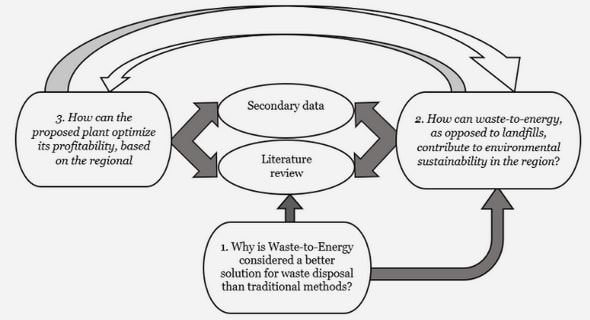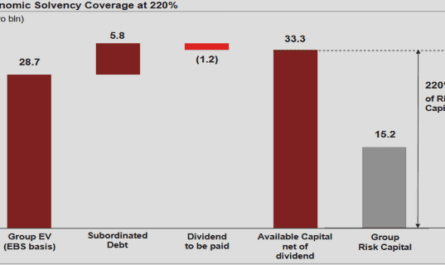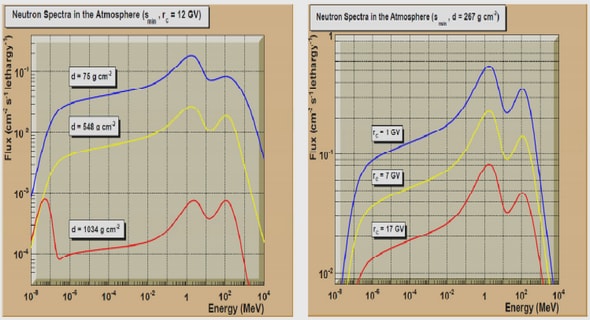Get Complete Project Material File(s) Now! »
Thesis overview and contributions
In this section we explain the organisation of the thesis manuscript. In chapter 2 we briefly present the basic physical principles underlying the NMR phenomena, and the resulting properties underlying the contrast mechanisms on NMRI techniques introduced in 1.2.
In chapter 3, we describe a methodology for the quantification of myowater T2-value on NMR images. In contrast to T2-weighted images, this technique allows the extraction of so called T2-maps, which are images of the actual T2-value distribution. This technique characterizes muscle tissue oedema, lesions and damages, by T2 quantification, and simultaneously also the degree of local fat infiltration, which make of it an interesting tool to study inflammation in fat infiltrated muscles. This technique was validated in vivo in healthy volunteers and myopathic patients. The study presented in this chapter was published in the Journal of Magnetic Resonance Imaging (Azzabou et al. 2014, Validation of a generic approach to muscle water T2 determination in fat-infiltrated skeletal muscle).
In chapter 4, we describe in details the application of another NMRI technique for the extraction of T2-maps. In contrast to the method proposed in Ch. 3, in this technique only water magnetization is selected, allowing simpler post processing. The proposed method also offers simpler approaches for correcting errors caused by system imperfections. This technique was validated in vivo, and the results presented in this chapter were the object of an article published in the journal Magnetic Resonance in Medicine (de Sousa et al. 2012. Factors controlling T2-mapping from partially spoiled SSFP sequence: optimization for skeletal muscle characterization).
Magnetic polarization (Magnetization)
The potential energy associated with the interaction between a magnetic dipole moment, ⃗ , and an external magnetic field, ⃗⃗ , is given by ⃗ ⃗⃗ 2.4.
The Boltzmann’s law of statistical mechanics states that for a system of particles in thermal equilibrium, the probability, , of observing the particles composing the system in a given arrangement varies exponentially with the negative of the potential energy of that arrangement, divided by , where and are the Boltzmann constant and the absolute temperature of the system, respectively. ⁄ 2.5 Equations 2.4 and 2.5 state that, when immersed in an external magnetic field, the magnetic momenta of the particles constituting the system will have a higher probability to be observed aligned to it, resulting in a measurable magnetic moment aligned to the 2–4 external field. We will say that the system is magnetized, defining the magnetization vector, ⃗⃗⃗ , as the spatial density distribution of the magnetic moment aligned to the external field at a time t. As the average thermal energy, , at human body temperatures (~ 310K) is much higher than the magnetic potential energy, ⃗ ⃗⃗ , the probability advantage of observing spin magnetic momenta aligned to ⃗⃗ is very small (~10-5 at 3 teslas). That is the reason why such high fields are usually used in NMR systems. The relation between ⃗⃗⃗ and ⃗ is linear and Eq. 2.2 may be easily generalized so that ⃗⃗⃗ ⃗⃗⃗ ⃗⃗ 2.6.
Magnetization excitation and the resonance phenomenon
Let’s define the non-zero net-magnetization aligned to the external magnetic field, ⃗⃗⃗⃗ , by ⃗⃗⃗ ∫ ⃗⃗⃗ ⃗ 2.7 We will call magnetization excitation the process of breaking the thermal equilibrium of a system by tipping the net magnetization vector away from the ⃗⃗⃗⃗ direction. This might be done by applying a second magnetic field, ⃗⃗⃗⃗ , orthogonal to ⃗⃗⃗⃗ . In practice | ⃗⃗⃗⃗ || ⃗⃗⃗⃗ | , and it is easy to notice that a static field ⃗⃗⃗⃗ will only bring the system to a second thermal equilibrium state with ⃗⃗ ( ⃗⃗⃗⃗ ⃗⃗⃗⃗ ). As the field ⃗⃗⃗⃗⃗⃗⃗⃗ ⃗⃗⃗⃗ ⃗⃗⃗⃗ ⃗⃗⃗⃗ , practically nothing will change. If instead, an oscillating transverse ⃗⃗⃗⃗ is applied at the Larmor precession frequency, , i.e., in resonance with the precessing magnetization, for a duration , the net magnetization will be tipped away by an angle | ⃗⃗⃗⃗ | . To see this, let’s observe the system from a referential rotating at the Larmor frequency (Figure 2-2). From this point of view the ⃗⃗⃗⃗ field will be static and no precession of ⃗⃗ around ⃗⃗⃗⃗ would ever be observed. It follows that in this referential ⃗⃗⃗⃗⃗⃗⃗⃗ ⃗⃗⃗⃗ and, from Eq. 2.6 it follows that ⃗⃗⃗ ⃗⃗⃗ ⃗⃗⃗⃗⃗ 2.8 which describes a simple precession of ⃗⃗⃗ around the ⃗⃗⃗⃗⃗ field. Different frequency and amplitude modulations of ⃗⃗⃗⃗ may be applied depending on 2–5 how one wants to tilt the net magnetization vector. For most of the NMR systems the Larmor frequency is on order of MHz and the magnetic field ⃗⃗⃗⃗ is usually referred to as a radio frequency (RF) pulse. An RF-pulse that tips the magnetization by an angle away from its original direction will be referred as to a -pulse.
Relaxation and the Bloch equations
After excitation, the system will not be in equilibrium anymore and a process of energy redistribution will take place, leading to re-attainment of Boltzmann equilibrium and re-alignment of magnetization to the longitudinal magnetic field, ⃗⃗⃗⃗ . Energy redistribution is accomplished by interactions between the magnetic moments of the excited nuclei and the molecules in the lattice, converting magnetic potential into kinetic energy. For each downward transition of a nuclear spin there will be an acceleration of a rotational, translational, or internal motion of the molecule in which the transition occurred. As for the process of excitation, most efficient interactions of ⃗ with external fields occur at the Larmor frequency. Consequently there must be a component of the molecular motion at that frequency, which makes the process of longitudinal relaxation strictly dependent on the rate of molecular motion. This process of energy redistribution is called longitudinal (or spin-lattice) relaxation.
If at equilibrium the net magnetization is aligned to the longitudinal magnetic field ⃗⃗⃗⃗ , then there must be no transverse residual magnetization at this point, implying that there is a process of transverse magnetization relaxation related to the restoration of the Boltzmann equilibrium. However, there is a second independent phenomenon that causes transverse magnetization damping. The molecules in the system are constantly experiencing rotational and translational Brownian motion. The magnetic moment of their protons will 2–7 then induce random fluctuations of the magnetic field within the space occupied by each nucleus. The longitudinal components of these fluctuating local fields will induce slightly different local precession frequencies which will result in incoherent dephasing of the spin isochromat, consequently killing the net transverse magnetization. These interactions may occur between protons within the same molecule (intramolecular interactions) or between protons in different molecules (intermolecular interactions). No energy is lost to the lattice in this process, and it is called transverse (or spin-spin) relaxation. In (36) a very simple model in which each individual spin magnetic moment interacts with its local magnetic field, which fluctuates randomly thus leading to a null mean phase dispersion of the whole system, is used to show that these random interactions lead imperatively to an exponential decay of the total magnetization amplitude with the time. Furthermore it is shown that in such a model the rate of decay is proportional to the correlation time, τc, which may be interpreted as representing the average time taken for the local fields to change significantly. With a more sophisticated mathematical model which takes the dynamics of the molecular motion into account, the correlation time may be derived from the rotational and oscillatory movements of the molecules constituting the system.
Nuclear magnetic resonance spectroscopy
Besides their characteristic intrinsic Larmor precession frequencies which allow different nuclei to be individually studied, the same nucleus experience distinct magnetic environments in different molecules, even if immersed in identical external magnetic fields. These differences will lead to characteristic local magnetic field shifts between different chemical compounds. This means that the characteristic Larmor precession frequency of a nucleus will be chemically shifted to slightly different values depending upon its molecular environment. In practice these chemical shifts are very small so that, in order to be observed, the inhomogeneities of the external magnetic field need to be smaller than the molecular magnetic field shifts within the volume occupied by the studied system. But even for ideal perfectly homogeneous fields, the same random fluctuations of the magnetic field that lead to the spin-spin relaxation process will limit the spectral resolution of each nucleus at any given chemical compound. However, the characteristic chemical frequency shifts are proportional to the external magnetic field, so that resolution of NMR spectra may be increased by increasing the external magnetic field.
In NMRS, the signal collected from the sample has contributions from all its chemical compounds containing the nucleus of study. By Fourier transforming the acquired signal one may map the time domain back into a frequency domain and thus quantify the individual contributions of each chemical compound resolvable in the extracted spectrum. An example of 1H-NMR signal acquired from a volume containing subcutaneous fat and muscle tissue at an external field of 3T and the corresponding spectrum extracted by Fourier transforming the signal is presented in Figure 2-5; the chemical shift between the methylene group in the triglycerides and water molecules is around 3.5 ppm, which corresponds to approximately 430 Hz at 3T.
Characterization of tissue NMR parameters and NMRI contrasts
The spin-echo phenomenon was first observed by Erwin Hahn in 1950 (39). He observed that the phase dispersion of the magnetization due to field in-homogeneities, which leads to T2* modulation of the intrinsic T2-decay, may be re-winded by the action of the 180° pulse component which will invert the phase of all spin magnetic moments leading to a time-symmetric re-establishment of phase coherence (or refocusing) (Figure 2-9). The instant of the re-establishment of phase coherence is usually called echo-time (TE).
Magnetization from repeated RF-pulses and the steady state
In practical NMRS applications signal acquisition is repeated a large number of times in order to accumulate signal and increase signal to noise ratio (SNR), while in NMRI 2–17 techniques, besides accumulation, signal is repeatedly acquired until obtaining enough k-space sampling for posterior image reconstruction. In both cases magnetization is often re-excited by the same θ-pulse at a constant time interval referred to as repetition time (TR).
The longitudinal magnetization, Mz, will be reduced by a factor cosθ after each excitation and will recover with a rate 1/T1 while the transverse magnetization, , will be summed to the freshly excited magnetization Mzsinθ. Moreover, the 180° components of each RF-pulse will refocus previously excited magnetization leading to the formation of echoes. It can be shown that, after a large enough number of re-excitations, the longitudinal magnetization, Mz, and the transverse magnetization, , will attain a constant value between consecutive TR intervals. This may be formally defined by with where n is the index of the nth TR-interval. When this condition is established the system is be said to be in a steady state condition.
The steady state condition is very explored in GRE sequences which are usually classified by the response of the transverse magnetization, . If the GRE sequence is such that, at the steady state condition, the transverse magnetization, , just after application of the θ-pulse will only have contributions of the freshly excited steady state longitudinal magnetization, , such that , then the sequence is said to be spoiled. However, if at steady state condition the transverse magnetization, , just after application of the θ-pulse will have contributions from freshly excited longitudinal steady state magnetization, , and previous transverse magnetization, , such that then the GRE sequence is said to produce a steady-state free precession (SSFP) condition. Detailed and formal discussion about GRE sequences and attainment of steady state conditions is presented in (36).
Table of contents :
V1. General Introduction
1.1. Skeletal muscle structure and histology
1.1.1. Striated muscle architecture
1.1.2. Muscle cell (Myofiber)
1.1.3. Intramuscular connective tissue: epimysium, perimysium and endomysium.
1.1.4. Structural and histological alterations induced by pathology in the skeletal muscle tissue
1.2. The role of NMR in myology clinical research
1.2.1. NMR outcome measures currently available for skeletal muscle studies
1.3. Thesis overview and contributions
2. Basic Concepts of Nuclear Magnetic Resonance
2.1. The spin magnetic moment and the precession equation
2.2. Magnetic polarization (Magnetization)
2.3. Magnetization excitation and the resonance phenomenon
2.4. Relaxation and the Bloch equations
2.5. Nuclear magnetic resonance spectroscopy
2.6. Nuclear magnetic resonance imaging
2.7. Characterization of tissue NMR parameters and NMRI contrasts .
2.7.1. The spin echo
2.7.2. The gradient echo
2.7.3. Magnetization from repeated RF-pulses and the steady state
2.7.4. Diffusion effects and T2 measurement
2.8. The issue of B1 in-homogeneity in practical NMRI applications at high field
3. A Spin-echo-based Method for T2-Mapping in Fat-infiltrated Muscles
3.1. Quantitative characterization of muscle inflammation
3.2. Separation of 1H-NMR signals from lipids and water
3.2.1. Spectral fat-water separation methods
3.2.2. Relaxation-based methods for fat-water separation
3.3. Validation of an MSE-based method for quantification of muscle water T2 in fat-infiltrated skeletal muscle
3.3.1. Methodology
3.3.1.1. Data acquisition
3.3.1.2. Data treatment
3.3.2. Results
3.3.3. Discussion and Conclusions
4. A Steady-state-based Method for T2-Mapping in Fat-infiltrated Muscles
4.1. Introduction
4.1.1. Context
4.1.2. Theory
4.1.2.1. The original T2-pSSFP method
4.1.2.2. The extended T2-pSSFP method
4.2. Methodology
4.3. Results
4.4. Discussion
4.5. Conclusion
5. Significance of T2 Relaxation of 1H-NMR Signals in Human Skeletal Muscle .
5.1. Relaxation in biological tissues
5.2. Multiexponential muscle water T2-relaxation and compartmentation hypotheses
5.3. New insights on human skeletal muscle tissue compartments revealed by in vivo T2 relaxometry
5.3.1. Methodology
5.3.1.1. Data acquisition
5.3.1.2. Data treatment
5.3.2. Results
5.3.3. Discussion
5.3.4. Conclusions
5.4. Insights on the T2-relaxometry of diseased skeletal muscle tissue
5.4.1. Methodology
5.4.1.1. Simulations
5.4.1.2. In-vivo data acquisition
5.4.2. Results
5.4.3. Discussion and conclusions
6. Application of Ultra-short Time to Echo Methods to Study Short-T2-components in Skeletal Muscle Tissue
6.1. The NMR signal from connective tissues
6.2. The UTE method
6.3. Application of a 3D-UTE sequence for the detection and characterization of a short-T2-component in skeletal muscle tissue
6.3.1. Methodology
6.3.2. Results
6.3.3. Discussion
6.4. UTE applications for imaging of short-T2-components in SKM tissue .
6.5. In-vivo NMRI of short-T2-components in SKM tissue
6.5.1. Methodology
6.5.2. Results
6.5.3. Discussion and conclusions
7. Conclusions and Perspectives


